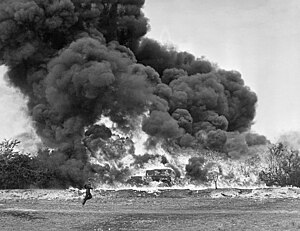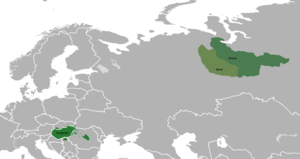https://en.wikipedia.org/wiki/Protolith
https://en.wikipedia.org/wiki/Slate
https://en.wikipedia.org/wiki/Shale
https://en.wikipedia.org/wiki/Mudstone
https://en.wikipedia.org/wiki/Geology
https://en.wikipedia.org/wiki/Pelite
https://en.wikipedia.org/wiki/Carbonate_rock
https://en.wikipedia.org/wiki/Ultramafic_rock
https://en.wikipedia.org/wiki/Mafic
https://en.wikipedia.org/wiki/Magma
https://en.wikipedia.org/wiki/Disruptive_innovation
https://en.wikipedia.org/wiki/Pascal%27s_mugging
https://en.wikipedia.org/wiki/Suffering_risks
https://en.wikipedia.org/wiki/Wild_animal_suffering
https://en.wikipedia.org/wiki/Category:Risk
https://en.wikipedia.org/wiki/Natural_risk
https://en.wikipedia.org/wiki/Imminent_peril
https://en.wikipedia.org/wiki/Risk_perception
https://en.wikipedia.org/wiki/Ruin_theory
https://en.wikipedia.org/wiki/Consumer%27s_risk
https://en.wikipedia.org/wiki/Category:Existential_risk
https://en.wikipedia.org/wiki/Global_catastrophic_risk
https://en.wikipedia.org/wiki/Category:Human_extinction
https://en.wikipedia.org/wiki/Category:Doomsday_scenarios
https://en.wikipedia.org/wiki/Category:Fictional_doomsday_scenarios
https://en.wikipedia.org/wiki/Category:Existential_risk_from_artificial_general_intelligence
https://en.wikipedia.org/wiki/Pseudocertainty_effect
https://en.wikipedia.org/wiki/Category:Aviation_risks
https://en.wikipedia.org/wiki/Runway_excursion
https://en.wikipedia.org/wiki/Aviation_archaeology
https://en.wikipedia.org/wiki/Category:Weather_hazards_to_aircraft
https://en.wikipedia.org/wiki/Ground_resonance
https://en.wikipedia.org/wiki/Ground_loop_(aviation)
https://en.wikipedia.org/wiki/Low-g_condition
https://en.wikipedia.org/wiki/Stall_(fluid_dynamics)
https://en.wikipedia.org/wiki/Turbine_engine_failure
https://en.wikipedia.org/wiki/Unstart
https://en.wikipedia.org/wiki/Vortex_ring
https://en.wikipedia.org/wiki/Pitch-up
https://en.wikipedia.org/wiki/Pilot_error
https://en.wikipedia.org/wiki/Flameout
https://en.wikipedia.org/wiki/Flight_envelope_protection
https://en.wikipedia.org/wiki/Fume_event
https://en.wikipedia.org/wiki/Graveyard_spiral
https://en.wikipedia.org/wiki/Ground_Collision
https://en.wikipedia.org/wiki/Deicing
https://en.wikipedia.org/wiki/Dynamic_rollover
https://en.wikipedia.org/wiki/Loss_of_control_(aeronautics)
https://en.wikipedia.org/wiki/Control_reversal
https://en.wikipedia.org/wiki/Core_lock
https://en.wikipedia.org/wiki/Brownout_(aeronautics)
https://en.wikipedia.org/wiki/Runway_excursion
https://en.wikipedia.org/wiki/Category:Hazards
https://en.wikipedia.org/wiki/Category:Fire
https://en.wikipedia.org/wiki/Category:Firelighting
https://en.wikipedia.org/wiki/Category:Fire
https://en.wikipedia.org/wiki/Fire_glass
https://en.wikipedia.org/wiki/Pyre
https://en.wikipedia.org/wiki/Purging_(gas)
https://en.wikipedia.org/wiki/Smoke
https://en.wikipedia.org/wiki/Smouldering
https://en.wikipedia.org/wiki/Theft_of_fire
https://en.wikipedia.org/wiki/Wash_copper
https://en.wikipedia.org/wiki/Lp0_on_fire
https://en.wikipedia.org/wiki/Lower_flammability_limit
https://en.wikipedia.org/wiki/Ignition_Component
https://en.wikipedia.org/wiki/Inerting_(gas)
https://en.wikipedia.org/wiki/Boilover
https://en.wikipedia.org/wiki/Boiling_liquid_expanding_vapor_explosion
https://en.wikipedia.org/wiki/Blue_lava
https://en.wikipedia.org/wiki/Bride_burning
https://en.wikipedia.org/wiki/Chimney_crane
https://en.wikipedia.org/wiki/Conflagration
https://en.wikipedia.org/wiki/Cool_flame
https://en.wikipedia.org/wiki/Cremation
https://en.wikipedia.org/wiki/Diffusion_flame
https://en.wikipedia.org/wiki/Ember
https://en.wikipedia.org/wiki/Fire_and_carbon_cycling_in_boreal_forests
https://en.wikipedia.org/wiki/Black_carbon
https://en.wikipedia.org/wiki/Arc_mapping
https://en.wikipedia.org/wiki/Autoignition_temperature
https://en.wikipedia.org/wiki/Fire_challenge
https://en.wikipedia.org/wiki/Category:Future_problems
https://en.wikipedia.org/wiki/Digital_obsolescence
https://en.wikipedia.org/wiki/Flood_basalt
https://en.wikipedia.org/wiki/Year_2038_problem
https://en.wikipedia.org/wiki/Atlantic_meridional_overturning_circulation
https://en.wikipedia.org/wiki/Category:Natural_hazards
https://en.wikipedia.org/wiki/Category:Natural_disasters
https://en.wikipedia.org/wiki/Category:Geological_hazards
https://en.wikipedia.org/wiki/Category:Flood
https://en.wikipedia.org/wiki/Category:Biological_hazards
https://en.wikipedia.org/wiki/Category:Weapons
https://en.wikipedia.org/wiki/Category:Non-lethal_weapons
https://en.wikipedia.org/wiki/Category:Weapons
https://en.wikipedia.org/wiki/Category:Crew_served_weapons
https://en.wikipedia.org/wiki/List_of_crew-served_weapons_of_the_U.S._Armed_Forces
https://en.wikipedia.org/wiki/M249_light_machine_gun
https://en.wikipedia.org/wiki/Category:Energy_weapons
https://en.wikipedia.org/wiki/Protocol_on_Blinding_Laser_Weapons
https://en.wikipedia.org/wiki/Category:Energy_weapons
https://en.wikipedia.org/wiki/Explosively_pumped_flux_compression_generator
https://en.wikipedia.org/wiki/Neutron_bomb
https://en.wikipedia.org/wiki/Vircator
https://en.wikipedia.org/wiki/Nuclear_electromagnetic_pulse
https://en.wikipedia.org/wiki/Soviet_Project_K_nuclear_tests
https://en.wikipedia.org/wiki/Radioflash
https://en.wikipedia.org/wiki/Pulsed_energy_weapon
https://en.wikipedia.org/wiki/Pulsed_energy_projectile
https://en.wikipedia.org/wiki/Magnetic_weapon
https://en.wikipedia.org/wiki/High-altitude_nuclear_explosion
https://en.wikipedia.org/wiki/Active_Denial_System
https://en.wikipedia.org/wiki/Electromagnetic_pulse
https://en.wikipedia.org/wiki/EMT-7
https://en.wikipedia.org/wiki/Category:Flexible_weapons
https://en.wikipedia.org/wiki/Category:Police_weapons
https://en.wikipedia.org/wiki/Category:Black-powder_pistols
https://en.wikipedia.org/wiki/Heckler_%26_Koch_G36
https://en.wikipedia.org/wiki/Heckler_%26_Koch_P9
https://en.wikipedia.org/wiki/.442_Webley
https://en.wikipedia.org/wiki/Beretta_92
https://en.wikipedia.org/wiki/Colt_9mm_SMG
https://en.wikipedia.org/wiki/Colt_1851_Navy_Revolver
https://en.wikipedia.org/wiki/Colt_Delta_Elite
https://en.wikipedia.org/wiki/Colt_Diamondback
https://en.wikipedia.org/wiki/Colt_CM901
https://en.wikipedia.org/wiki/Caracal_pistol
https://en.wikipedia.org/wiki/Colt_Model_1871%E2%80%9372_Open_Top
https://en.wikipedia.org/wiki/Colt_Model_1903_Pocket_Hammerless
https://en.wikipedia.org/wiki/Colt_New_Police_Revolver
https://en.wikipedia.org/wiki/Colt_Python
https://en.wikipedia.org/wiki/Colt_Single_Action_Army
https://en.wikipedia.org/wiki/CornerShot
https://en.wikipedia.org/wiki/Dazer_Laser
https://en.wikipedia.org/wiki/Destroyer_carbine
https://en.wikipedia.org/wiki/Category:Police_weapons
https://en.wikipedia.org/wiki/Flash-ball
https://en.wikipedia.org/wiki/FN_Five-seven
https://en.wikipedia.org/wiki/Gasser_M1870
https://en.wikipedia.org/wiki/Glock
https://en.wikipedia.org/wiki/Ruger_Police_Carbine
https://en.wikipedia.org/wiki/Ruger_Security-Six
https://en.wikipedia.org/wiki/Riot_shield
https://en.wikipedia.org/wiki/Remington_Model_700
https://en.wikipedia.org/wiki/Rast_%26_Gasser_M1898
https://en.wikipedia.org/wiki/Remington_Model_1100
https://en.wikipedia.org/wiki/Vektor_SP1
https://en.wikipedia.org/wiki/Type_79_submachine_gun
https://en.wikipedia.org/wiki/TT_pistol
https://en.wikipedia.org/wiki/Thompson_submachine_gun
https://en.wikipedia.org/wiki/Taurus_PT92
https://en.wikipedia.org/wiki/Taurus_Model_85
https://en.wikipedia.org/wiki/Taser
https://en.wikipedia.org/wiki/Pain_compliance
https://en.wikipedia.org/wiki/Mossberg_500
https://en.wikipedia.org/wiki/Mauser_Model_1889
https://en.wikipedia.org/wiki/Martini%E2%80%93Henry
https://en.wikipedia.org/wiki/Martini%E2%80%93Enfield
https://en.wikipedia.org/wiki/Manurhin_MR_73
https://en.wikipedia.org/wiki/Stun_belt
https://en.wikipedia.org/wiki/Steyr_SSG_69
https://en.wikipedia.org/wiki/Stechkin_automatic_pistol
https://en.wikipedia.org/wiki/Star_Model_BM
https://en.wikipedia.org/wiki/SR-25
https://en.wikipedia.org/wiki/Springfield_Armory_XD
https://en.wikipedia.org/wiki/Smith_%26_Wesson_Triple_Lock
https://en.wikipedia.org/wiki/Smith_%26_Wesson_SW99
https://en.wikipedia.org/wiki/Smith_%26_Wesson_SD
https://en.wikipedia.org/wiki/Smith_%26_Wesson_Model_6904
https://en.wikipedia.org/wiki/M1_carbine
https://en.wikipedia.org/wiki/M24_Sniper_Weapon_System
https://en.wikipedia.org/wiki/M50_Reising
https://en.wikipedia.org/wiki/M1911_pistol
https://en.wikipedia.org/wiki/Machine_pistol
https://en.wikipedia.org/wiki/MAC-10
https://en.wikipedia.org/wiki/Machine_pistol
https://en.wikipedia.org/wiki/Makarov_pistol
https://en.wikipedia.org/wiki/Malinnov_M1P
https://en.wikipedia.org/wiki/Smith_%26_Wesson_Model_60
https://en.wikipedia.org/wiki/Smith_%26_Wesson_Model_10
https://en.wikipedia.org/wiki/Smith_%26_Wesson_Ladysmith
https://en.wikipedia.org/wiki/Ithaca_37
https://en.wikipedia.org/wiki/HS2000
https://en.wikipedia.org/wiki/SIG_P210
https://en.wikipedia.org/wiki/Heckler_%26_Koch_P30
https://en.wikipedia.org/wiki/Sabre
https://en.wikipedia.org/wiki/Category:Primitive_weapons
https://en.wikipedia.org/wiki/Hand_axe
https://en.wikipedia.org/wiki/Category:Railway_weapons
https://en.wikipedia.org/wiki/Attack_on_Cloghoge_checkpoint
https://en.wikipedia.org/wiki/The_General_(locomotive)
https://en.wikipedia.org/wiki/Minuteman_Mobility_Test_Train
https://en.wikipedia.org/wiki/Railcar-launched_ICBM
https://en.wikipedia.org/wiki/Railroad_plough
https://en.wikipedia.org/wiki/The_Texas_(locomotive)
https://en.wikipedia.org/wiki/The_Yonah_(locomotive)
https://en.wikipedia.org/wiki/Armoured_train
https://en.wikipedia.org/wiki/Category:Recreational_weapons
https://en.wikipedia.org/wiki/Category:Pneumatic_weapons
https://en.wikipedia.org/wiki/BB_gun
https://en.wikipedia.org/wiki/Crosman_Nightstalker
https://en.wikipedia.org/wiki/Steam_cannon
https://en.wikipedia.org/wiki/Vacuum_bazooka
https://en.wikipedia.org/wiki/Umarex_air_pistol
https://en.wikipedia.org/wiki/Gel_blaster
https://en.wikipedia.org/wiki/Dynamite_gun
https://en.wikipedia.org/wiki/Daystate
https://en.wikipedia.org/wiki/Crosman_Pumpmaster_760
https://en.wikipedia.org/wiki/Pneumatic_weapon
https://en.wikipedia.org/wiki/Crosman
https://en.wikipedia.org/wiki/Walther_LGR
https://en.wikipedia.org/wiki/TG-1
https://en.wikipedia.org/wiki/Category:Toy_weapons
https://en.wikipedia.org/wiki/Daisy_Outdoor_Products
https://en.wikipedia.org/wiki/Category:Laser_tag
https://en.wikipedia.org/wiki/Toy_gun
https://en.wikipedia.org/wiki/Johnny_Seven_OMA
https://en.wikipedia.org/wiki/Pop_gun
https://en.wikipedia.org/wiki/Spud_gun
https://en.wikipedia.org/wiki/Tracer_gun
https://en.wikipedia.org/wiki/Water_gun
https://en.wikipedia.org/wiki/Modelguns
https://en.wikipedia.org/wiki/Air_vortex_cannon
https://en.wikipedia.org/wiki/The_Man_from_U.N.C.L.E._gun
https://en.wikipedia.org/wiki/Entertech
https://en.wikipedia.org/wiki/Cap_gun
https://en.wikipedia.org/wiki/Category:Weapons_of_mass_destruction
https://en.wikipedia.org/wiki/Weapon_of_mass_destruction
https://en.wikipedia.org/wiki/Tectonic_weapon
https://en.wikipedia.org/wiki/Chemical_weapon
https://en.wikipedia.org/wiki/Category:Biological_weapons
https://en.wikipedia.org/wiki/Category:Nuclear_weapons
https://en.wikipedia.org/wiki/Category:Radiological_weapons
https://en.wikipedia.org/wiki/Category:Mythological_weapons
https://en.wikipedia.org/wiki/Sun_gun
https://en.wikipedia.org/wiki/Category:Inuit_weapons
https://en.wikipedia.org/wiki/Snow_knife
https://en.wikipedia.org/wiki/Category:Insurgency_weapons
https://en.wikipedia.org/wiki/Abingdon_Sword
https://en.wikipedia.org/wiki/Bechowiec-1
https://en.wikipedia.org/wiki/Category:Insurgency_weapons
https://en.wikipedia.org/wiki/Improvised_firearm
https://en.wikipedia.org/wiki/Pressure_cooker_bomb
https://en.wikipedia.org/wiki/FP-45_Liberator
https://en.wikipedia.org/wiki/S4M
https://en.wikipedia.org/wiki/BSA_Welgun
https://en.wikipedia.org/wiki/Zagi_M-91
https://en.wikipedia.org/wiki/Pipe_bomb
https://en.wikipedia.org/wiki/Pleter_91_submachine_gun
https://en.wikipedia.org/wiki/Barrack_buster
https://en.wikipedia.org/wiki/Category:Individual_weapons
https://en.wikipedia.org/wiki/Category:Individual_weapons
https://en.wikipedia.org/wiki/Oxborough_Dirk
https://en.wikipedia.org/wiki/Gray%27s_Inn_Lane_Hand_Axe
https://en.wikipedia.org/wiki/Holy_Lance
https://en.wikipedia.org/wiki/Imperial_Sword
https://en.wikipedia.org/wiki/S%C3%A6b%C3%B8_sword
https://en.wikipedia.org/wiki/Sabre_of_Charlemagne
https://en.wikipedia.org/wiki/Sch%C3%B6ningen_spears
https://en.wikipedia.org/wiki/Ulen_sword
https://en.wikipedia.org/wiki/Wallace_Sword
https://en.wikipedia.org/wiki/Preah_Khan_Reach
https://en.wikipedia.org/wiki/Dagger_(13th%E2%80%9312th_centuries_BC,_Artik)
https://en.wikipedia.org/wiki/Gilling_sword
https://en.wikipedia.org/wiki/Curved_saber_of_San_Mart%C3%ADn
https://en.wikipedia.org/wiki/Cawood_sword
https://en.wikipedia.org/wiki/North_Grimston_sword
https://en.wikipedia.org/wiki/Narmer_Macehead
https://en.wikipedia.org/wiki/Sword_of_State_(Isle_of_Man)
https://en.wikipedia.org/wiki/Seven-Branched_Sword
https://en.wikipedia.org/wiki/Sword_of_Peter
https://en.wikipedia.org/wiki/Sword_of_Saints_Cosmas_and_Damian
https://en.wikipedia.org/wiki/Kris_of_Knaud
https://en.wikipedia.org/wiki/Category:Incendiary_weapons
https://en.wikipedia.org/wiki/Category:Incendiary_weapons
https://en.wikipedia.org/wiki/Incendiary_device
https://en.wikipedia.org/wiki/Astragalus_sarcocolla
https://en.wikipedia.org/wiki/Bat_bomb
https://en.wikipedia.org/wiki/Carcass_(projectile)
https://en.wikipedia.org/wiki/Geletrol
https://en.wikipedia.org/wiki/German_Village_(Dugway_Proving_Ground)
https://en.wikipedia.org/wiki/Greek_fire
https://en.wikipedia.org/wiki/Grenade
https://en.wikipedia.org/wiki/Handflammpatrone
https://en.wikipedia.org/wiki/High-explosive_incendiary
https://en.wikipedia.org/wiki/Incendiary_ammunition
https://en.wikipedia.org/wiki/Nano-thermite
https://en.wikipedia.org/wiki/Napalm
https://en.wikipedia.org/wiki/OP-2_(thickener)
https://en.wikipedia.org/wiki/Reactive_material
https://en.wikipedia.org/wiki/Chlorine_trifluoride
https://en.wikipedia.org/wiki/Early_thermal_weapons
https://en.wikipedia.org/wiki/Triethylaluminium
https://en.wikipedia.org/wiki/War_pig
https://en.wikipedia.org/wiki/White_phosphorus_munitions
https://en.wikipedia.org/wiki/X-200_mine
https://en.wikipedia.org/wiki/Ketchum_Grenade
https://en.wikipedia.org/wiki/M4_flame_fuel_thickening_compound
https://en.wikipedia.org/wiki/M69_incendiary
https://en.wikipedia.org/wiki/M202_FLASH
https://en.wikipedia.org/wiki/M202_FLASH
https://en.wikipedia.org/wiki/Mark_77_bomb
https://en.wikipedia.org/wiki/Protocol_on_Incendiary_Weapons
https://en.wikipedia.org/wiki/Molotov_bread_basket
https://en.wikipedia.org/wiki/Molotov_cocktail
https://en.wikipedia.org/wiki/Falarica
https://en.wikipedia.org/wiki/FHJ-84
https://en.wikipedia.org/wiki/Fire_pot
https://en.wikipedia.org/wiki/Firebombing
https://en.wikipedia.org/wiki/Flame_fougasse
https://en.wikipedia.org/wiki/Flamethrower
https://en.wikipedia.org/wiki/Flare
https://en.wikipedia.org/wiki/Fougasse_(weapon)
https://en.wikipedia.org/wiki/Category:Weapon_history
https://en.wikipedia.org/wiki/Historiography_of_gunpowder_and_gun_transmission
https://en.wikipedia.org/wiki/Vira_bruk
https://en.wikipedia.org/wiki/Category:Weapons_countermeasures
https://en.wikipedia.org/wiki/Category:Penetration_aids
https://en.wikipedia.org/wiki/Nuclear_blackout
https://en.wikipedia.org/wiki/Category:Weapons_countermeasures
https://en.wikipedia.org/wiki/Radar_jamming_and_deception
https://en.wikipedia.org/wiki/Rhino_Passive_Infrared_Defeat_System
https://en.wikipedia.org/wiki/Quick_Kill
https://en.wikipedia.org/wiki/Fanfare_(decoy)
https://en.wikipedia.org/wiki/Acoustic_signature
https://en.wikipedia.org/wiki/Gunfire_locator
https://en.wikipedia.org/wiki/AN/ALE-55_Fiber-Optic_Towed_Decoy
https://en.wikipedia.org/wiki/Arena_(countermeasure)
https://en.wikipedia.org/wiki/Bold_(decoy)
https://en.wikipedia.org/wiki/Bukovel_(counter_unmanned_aircraft_system)
https://en.wikipedia.org/wiki/Iron_Dome
https://en.wikipedia.org/wiki/Close-in_weapon_system
https://en.wikipedia.org/wiki/Counter-IED_equipment
https://en.wikipedia.org/wiki/LEDS-150
https://en.wikipedia.org/wiki/Thetis_(decoy)
https://en.wikipedia.org/wiki/Trophy_(countermeasure)
https://en.wikipedia.org/wiki/Smoke_screen
https://en.wikipedia.org/wiki/Sieglinde_(decoy)
https://en.wikipedia.org/wiki/SSTD
https://en.wikipedia.org/wiki/Nozh_(explosive_reactive_armour)
https://en.wikipedia.org/wiki/Iron_Curtain_(countermeasure)
https://en.wikipedia.org/wiki/Kavach_(anti-missile_system)
https://en.wikipedia.org/wiki/M58_MICLIC
https://en.wikipedia.org/wiki/Scorpius_electronic_warfare_system
https://en.wikipedia.org/wiki/Category:Blade_weapons
https://en.wikipedia.org/wiki/Category:Blade_weapons
https://en.wikipedia.org/wiki/Category:Guillotine
https://en.wikipedia.org/wiki/Category:Single-edged_swords
https://en.wikipedia.org/wiki/Category:Knives
https://en.wikipedia.org/wiki/Category:Axes
https://en.wikipedia.org/wiki/Category:Bayonets
https://en.wikipedia.org/wiki/Category:Daggers
https://en.wikipedia.org/wiki/Battle_axe
https://en.wikipedia.org/wiki/Bayonet
https://en.wikipedia.org/wiki/Blade
https://en.wikipedia.org/wiki/Bladesmith
https://en.wikipedia.org/wiki/Bollock_dagger
https://en.wikipedia.org/wiki/Bolo_knife
https://en.wikipedia.org/wiki/Bowie_knife
https://en.wikipedia.org/wiki/Knife_bayonet
https://en.wikipedia.org/wiki/Chicken_sickles
https://en.wikipedia.org/wiki/Classification_of_swords
https://en.wikipedia.org/wiki/Combat_knife
https://en.wikipedia.org/wiki/Companion_weapon
https://en.wikipedia.org/wiki/Machete
https://en.wikipedia.org/wiki/Dagger
https://en.wikipedia.org/wiki/Dagger-axe
https://en.wikipedia.org/wiki/Dirk
https://en.wikipedia.org/wiki/Gravity_knife
https://en.wikipedia.org/wiki/War_scythe
https://en.wikipedia.org/wiki/Urumi
https://en.wikipedia.org/wiki/Vechevoral
https://en.wikipedia.org/wiki/Switchblade
https://en.wikipedia.org/wiki/Sword
https://en.wikipedia.org/wiki/Stiletto
https://en.wikipedia.org/wiki/Sica
https://en.wikipedia.org/wiki/Sorocaban_Knife
https://en.wikipedia.org/wiki/Seax_of_Beagnoth
https://en.wikipedia.org/wiki/Scythed_chariot
https://en.wikipedia.org/wiki/Shotel
https://en.wikipedia.org/wiki/Sabre
https://en.wikipedia.org/wiki/Scabbard
https://en.wikipedia.org/wiki/Scythe
https://en.wikipedia.org/wiki/Scimitar
https://en.wikipedia.org/wiki/Rampuri
https://en.wikipedia.org/wiki/Qama
https://en.wikipedia.org/wiki/Pattern_welding
https://en.wikipedia.org/wiki/Partisan_(weapon)
https://en.wikipedia.org/wiki/Parry_(fencing)
https://en.wikipedia.org/wiki/Pisau_raut
https://en.wikipedia.org/wiki/Category:Area_denial_weapons
https://en.wikipedia.org/wiki/Category:Cluster_munition
https://en.wikipedia.org/wiki/Category:Land_mines
https://en.wikipedia.org/wiki/Category:Mine_warfare
https://en.wikipedia.org/wiki/Category:Weapons_by_war
https://en.wikipedia.org/wiki/Category:Weapons_by_war
https://en.wikipedia.org/wiki/Category:Weapons_by_target
https://en.wikipedia.org/wiki/Category:Weapons_by_year_of_introduction
https://en.wikipedia.org/wiki/Category:Biological_weapons
https://en.wikipedia.org/wiki/Anthropogenic_hazard
https://en.wikipedia.org/wiki/Stampede
https://en.wikipedia.org/wiki/Category:Natural_hazards
https://en.wikipedia.org/wiki/Category:Explosions
| Flame fougasse | |
|---|---|
 A demonstration of 'Fougasse', somewhere in Britain. A car is surrounded in flames and a huge cloud of smoke. c 1940. | |
| Type | Anti-personnel and anti-tank mine |
| Place of origin | United Kingdom |
| Service history | |
| In service | 1940–present |
| Used by | British Army and Home Guard |
| Wars | Second World War |
| Production history | |
| Designer | Petroleum Warfare Department and William Howard Livens |
| Designed | 1940-41 |
| No. built | 50,000 in Britain |
| Specifications | |
| Rate of fire | Single shot |
| Effective firing range | 30 yd (27 m)[1] |
| Sights | None |
https://en.wikipedia.org/wiki/Flame_fougasse





